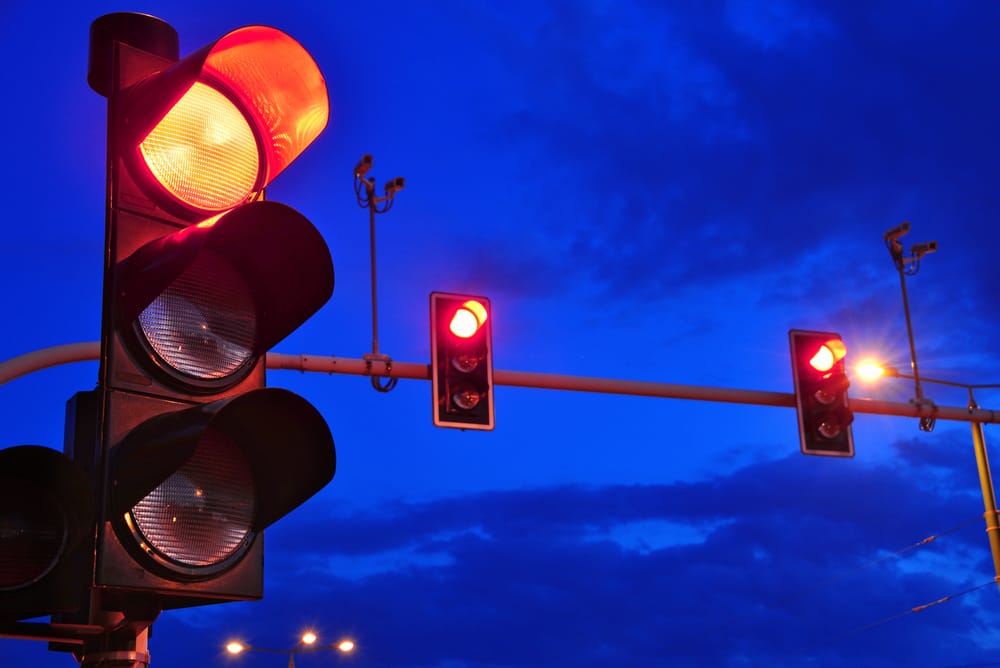Navigating traffic lights can be a breeze for experienced drivers, but specific rules like right turns on red lights can sometimes cause confusion, even for seasoned motorists. This confusion can be amplified when traveling across state lines, as right-turn-on-red regulations can vary. Understanding these rules is crucial for safe and legal driving in New Hampshire.
This blog post delves into the Right Turn on Red Rule in New Hampshire (as of May 2, 2024). We’ll explore the legal right to turn, stopping requirements, yielding procedures, and exceptions to the rule. We’ll also discuss safe practices to ensure smooth and safe right turns on red lights.
While there haven’t been any recent updates to the Right Turn on Red Rule in New Hampshire (2024), staying informed about traffic regulations is vital for any driver.
Right Turn on Red Rule in New Hampshire
The Right Turn on Red Rule allows drivers in New Hampshire to turn right at a red light after coming to a complete stop, unless a sign specifically prohibits it. This rule helps to improve traffic flow, especially during periods of lighter traffic.
Here’s a breakdown of the key aspects of the Right Turn on Red Rule in New Hampshire:
- Legal Right to Turn: New Hampshire law permits right turns at red lights after a complete stop, assuming there are no posted signs prohibiting the maneuver.
- Complete Stop Requirement: This is the most crucial aspect of the rule. Drivers must come to a full stop before the designated stop line or crosswalk at the intersection. A rolling stop is considered a violation.
- Yielding Right of Way: After coming to a complete stop, drivers must yield the right of way to all oncoming traffic, including those turning left and continuing straight through the intersection. Additionally, pedestrians crossing the street in any direction, with or without a walk signal, have the right of way.
Use of Turn Signal:
Always activate your right turn signal well in advance (at least 100 feet before the intersection) to alert other drivers of your intention to turn. This helps to improve overall traffic flow and avoid sudden maneuvers that could lead to accidents.
Exceptions to Right Turn on Red
While the general rule permits right turns on red lights, there are specific exceptions to be aware of:
- Posted Signs: Look out for signs explicitly prohibiting right turns on red. These signs are often marked with a red circle and a diagonal red bar with the words “No Turn on Red.” Always obey these posted signs, regardless of the general rule.
- Unclear or Blocked Intersection: If the intersection is unclear due to poor visibility, construction, or blocked lanes, refrain from making a right turn on red. Wait until you have a clear view of oncoming traffic and pedestrians before proceeding.
- Double Right Turns: Right turns onto one-way streets from a two-way street are generally not permitted on red lights in New Hampshire. This is because judging oncoming traffic from both directions can be challenging.
- Left-Turning Vehicles with Yield Signs: If you’re turning right and encounter oncoming left-turning vehicles with yield signs, proceed with caution. They may not always come to a complete stop, so ensure they have yielded the right of way before proceeding with your turn.
- School Buses: Yield the right of way to school buses with flashing red lights and a stop sign extended, regardless of the direction you’re traveling (including right turns on red).
Safe Practices for Right Turns on Red
- Come to a Complete Stop and Look Both Ways: This may seem obvious, but it’s crucial to emphasize. Come to a full stop before the designated stop line or crosswalk. Look thoroughly in all directions for oncoming traffic (including left-turning vehicles) and pedestrians in crosswalks (even if they don’t have a walk signal). Double-check blind spots before proceeding.
- Yield to Pedestrians in Crosswalks (Even Without Signal): Pedestrians in crosswalks always have the right of way, regardless of whether they have a walk signal. Be patient and allow them to cross safely before making your turn. Failing to yield to pedestrians is a serious traffic violation and can lead to accidents.
- Anticipate Oncoming Traffic (Especially Left Turns): While waiting at the red light, pay attention to oncoming traffic, particularly those in left-turn lanes. Anticipate their movements and be prepared to yield the right of way if they haven’t come to a complete stop before your turn.
- Avoid Blocking the Intersection for Straight-Going Traffic: Only proceed with your right turn if there’s enough space in the lane you’re turning into. Don’t block the intersection for oncoming straight-going traffic waiting for the light to turn green. This can lead to congestion and frustration for other drivers.
- Proceed with Caution When Visibility is Limited: If visibility is compromised due to rain, fog, darkness, or other factors, exercise extra caution when making a right turn on red. Slow down your approach to the intersection, take more time to scan for oncoming traffic and pedestrians, and only proceed when you’re confident it’s safe to do so.
Right Turn on Red in Neighboring States (Optional)
Traffic laws, including Right Turn on Red regulations, can vary across state lines. If you’re planning to travel to neighboring states, it’s wise to familiarize yourself with their specific rules:
- Maine: Similar to New Hampshire, Maine allows right turns on red after a complete stop and yielding to pedestrians and oncoming traffic.
- Vermont: Vermont also permits right turns on red under the same conditions as New Hampshire and Maine.
- Massachusetts: Massachusetts law differs slightly. Right turns on red are generally allowed, but some intersections may have specific restrictions posted. Always double-check for signage before proceeding.
Conclusion
Understanding and following the Right Turn on Red Rule in New Hampshire is essential for safe and efficient driving. By adhering to the legal guidelines, yielding the right of way appropriately, and practicing safe driving techniques, you can contribute to a smoother flow of traffic and minimize the risk of accidents.
Importance of Following the Rules
Disregarding the Right Turn on Red Rule can lead to traffic violations and fines. More importantly, failing to yield the right of way or making a right turn on red when unsafe can cause serious accidents with pedestrians and other vehicles.
Staying Up-to-Date on Traffic Laws
Traffic laws can occasionally change. It’s a good practice to periodically review the New Hampshire Driver’s Manual or visit the official website of the New Hampshire Department of Motor Vehicles (DMV) to stay updated on any revisions to traffic regulations, including the Right Turn on Red Rule.
By following the information and safe practices outlined in this blog post, you can navigate right turns on red lights in New Hampshire with confidence and contribute to a safer driving environment for everyone.
Disclaimer: This blog post is intended for informational purposes only and should not be construed as legal advice. Always refer to official government sources for the most up-to-date traffic laws in New Hampshire.



